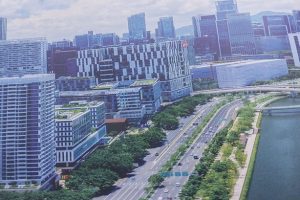BY GIRMACHEW GASHAW
Bamboo, the untapped green gold of Ethiopia, is abundantly available with over 1 million hectares of natural bamboo forest alone, which can be sustainably harvested at low cost.
Ethiopia is one of the few countries in the world endowed with a vast bamboo resource base. The country has an estimated one million hectares of natural bamboo forest, 7 % of the world total and 67 % of the African total. The two indigenous bamboo species in Ethiopia are the African alpine bamboo and a monotypic genus of lowland bamboo.
Although representative case studies are still rare, experts indicated that in Ethiopia, a great number of people are engaged in bamboo management to support their livelihoods. It was estimated that over 1.2 billion USD can be generated every year if the country’s bamboo resource base is properly utilized, experts estimated.
In their study on the role of bamboo for construction materials, Kibwage and Misreave reported that bamboo accounted for 2–3 % at the national level and more than 50 % in rural areas including Benishangul Gumuz National State in Ethiopia.
However, unlike other countries, the development and utilization of bamboo in Ethiopia is fundamentally rudimentary, and its socio-economic and ecological potentials are not yet realized. Despite the sporadic initiatives to develop and use bamboo, it has received little emphasis and not been well-integrated into the overall development planning. Rather, the currently alarming large-scale deforestation of bamboo-growing areas coupled with the historical mass flowering and death of the species are resulting in loss of the unique resource before its economic, social and environmental advantages are understood and appreciated.
The customary and current bamboo use is far below its potential due to lack of knowledge and skills on bamboo silvi-culture and poor establishment and management of bamboo stands. The existing underdeveloped value chain of bamboo products describing the socio-economic importance of bamboo resources at local and national economic scales are contributing to low interest in integrating and sustainably developing bamboo resources.
The society has given little attention to bamboo resources and the products. Hence, the rampant mass conversion of bamboo landscapes into commercial farm lands
and resettlement that has been threatening the existence of the resource base.
Experts in the field said that although Ethiopia has a lot of bamboo resources, the sector is not yet developed properly in a way that benefits the people. They pointed out that if it was developed well, the nation would gain countless economic benefits apart from generating jobs for a number of unemployed youth in the country. However, these days, the untapped bamboo has not been converted into products with a great amount so as to bring about an impact in the economy.
Jamal Omar Hojele, a plant conservationist working for the agriculture bureau of the Benishangul state, pointed out that bamboo, which is one of the potential natural resources of the state, has not been developed. Due to this reason, the state has given due emphasis and established the directorate with a mandate of identifying, developing and utilizing the potential resources in the state including bamboo resources.
Citing the study conducted in the Assosa district, Jamal mentioned that there are more than 77,000 hectares of dense lowland bamboo. The resource is now being depleted and is not being properly protected.
Bamboo is used to make musical instruments, food, animal feed, medicine, water filtration, home wall and roof construction, furniture, and various agricultural tools. Citing the best practice of Chinese people, Jemal said they used bamboo to erect buildings as high as up to 20 stories.
Bamboo gives fruit for forty years and the new plant also provides service in the same cycle. Research indicates that there are more than 1,200 species, including those found in the Chinese called Highland bamboo, which are up to 40 meters tall and two meters wide.
Bamboo is also used for many furniture works, including modern beehives for the high honey resources in the region. But now the wealth is being destroyed due to expansion of agriculture, wildfires and various disasters and lack of awareness. Jemal also pointed out that it is necessary to increase the economy of our country paying due attention to the large amount of bamboo resources turning it into an economic advantage.
Now is the time for potential investors to come and invest in Ethiopia and maximize the benefit they wanted to gain developing bamboo and green gold.
THE ETHIOPIAN HERALD 28 DECEMBER 2022





